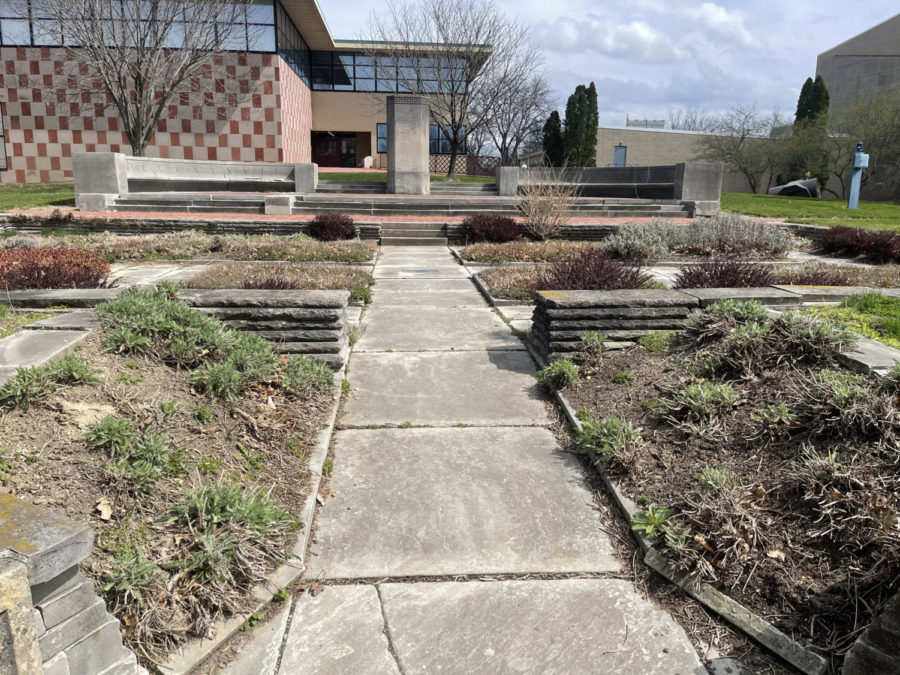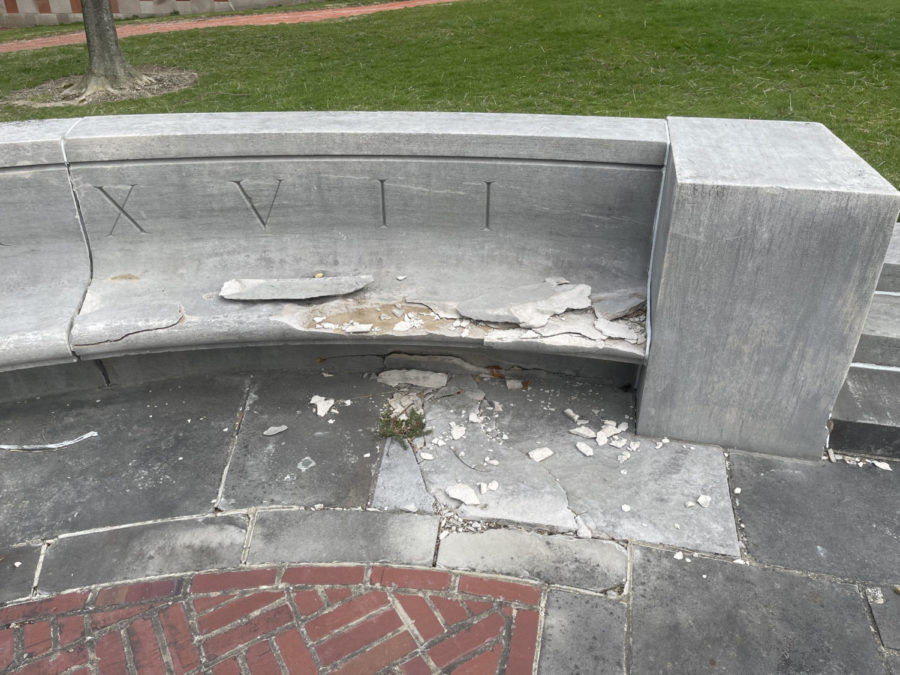A Monument Neglected: Examining the History of Coeducation Centennial Memorial Gateway
As part of a project for my first-year seminar last semester, I had the chance to learn about Oberlin’s many historical monuments — part of the rich history that reflects Oberlin’s groundbreaking progressivism — but I was surprised to find one in a state of serious disrepair.
As I write this piece, I am facing The Coeducation Centennial Memorial Gateway, an example of a monument unfortunately neglected by the College. It lies on North Main Street, pressed between the Allen Memorial Art Museum and Hall Auditorium, directly across from Clark Bandstand in Tappan Square. The monument seems to have been reduced to a mere walkway between the buildings. I watch as a tour guide leads prospective students and parents through the monument; its existence elicits merely a glance.

While one would think its maintenance would be a priority, given the monument’s prominent location on one of the main thoroughfares through Oberlin, the gateway’s crumbling concrete and overgrown flower beds testify to its neglect. What was once a terraced herbal garden that marks the front part of the monument is now a mostly overgrown plot dotted with concrete chunks and plastic litter. Sections of the concrete bench that line the rear of the monument have disintegrated into shards.
The surrounding landscape and buildings constructed after it seem to ignore the monument’s function as a gateway, which now appears to lead nowhere. Students have no walkway that leads directly past the monument; instead, they must traverse an awkward grassy incline. Given how the monument is now situated, the names of the women this monument honors are surprisingly difficult to find.
The monument was erected in 1937 on the 100th anniversary of Oberlin College’s first year accepting women into its four-year degree program. While Oberlin was the U.S.’s first co-educational college, it had previously only allowed women to study in a department specifically dedicated to teacher training. The Coeducation Centennial Memorial Gateway honors alumni Mary Fletcher Kellogg, Caroline Mary Rudd, Mary Hosford, and Elizabeth Smith Prall.
As I traced my index finger over the names of the women carved into the coarse stone of the monument’s central pillar, I tried to imagine their experience: the courage it must have taken to be one of the first women to study in college classes with virtually all men, and how incredibly nervous they must have felt on their first day. When these women were admitted to Oberlin in 1837, they would not have been able to hold any property in their own name in Ohio, nor would they have been able to represent themselves in any legal matter. Yet, they came to Oberlin to do what no other American woman at the time could do: pursue a four-year college education.
The dedication of this monument in 1937 was not without fanfare. A full-length feature article ran in The New York Times detailing the celebration accompanying the monument’s dedication, as well as Oberlin’s rich history as it stood in 1937.
Oberlin’s acceptance of women into its four-year degree program sparked a coeducational spirit of progressivism that spread to other colleges in the Midwest. And yet that progressive spirit rarely encompassed racial equality. The four women admitted to Oberlin were all white, and while accepting white women clearly signified progress, Black women would face the barriers of both racism and sexism at Oberlin. As College third-year Nasirah Fair detailed in her Instagram post, and College third-year and News Editor Gigi Ewing reported in the Review, one of the first Black female students at Oberlin, Edmonia Lewis, was unable to complete her degree due to the intense bigotry she suffered at the College.

In the same way that the gateway of this monument leads to nowhere, this monument feels incomplete. Progressive change-makers have new goals at Oberlin, and the once radical ideal of coeducation is now a common-sense practice. Because coeducation no longer seems like an achievement, this monument seems diminished. For me, this prompts the questions: What does it mean to celebrate an event in Oberlin’s history that reflected astounding courage on the part of the College, but also left out people of color, specifically Black women? Should we celebrate an event that was progress, but not enough?
I still believe we can both celebrate the incremental social progress of Oberlin becoming a coeducational institution in 1833, and acknowledge that this step was merely one of many on an unfinished road toward racial and social justice paved by so many at Oberlin College over its almost 200-year history.
I still don’t know whether this monument can be revived as a place to honor and reflect. Its state of disrepair seems to suggest that the College doesn’t see the monument as having a place here anymore. But neglecting the monument disrespects the legacy of these trailblazing women and all those who came after to defy prejudice in pursuit of equality. In honor of Oberlin’s role as a revolutionary force in education, let’s restore this monument to some semblance of its former beauty.






